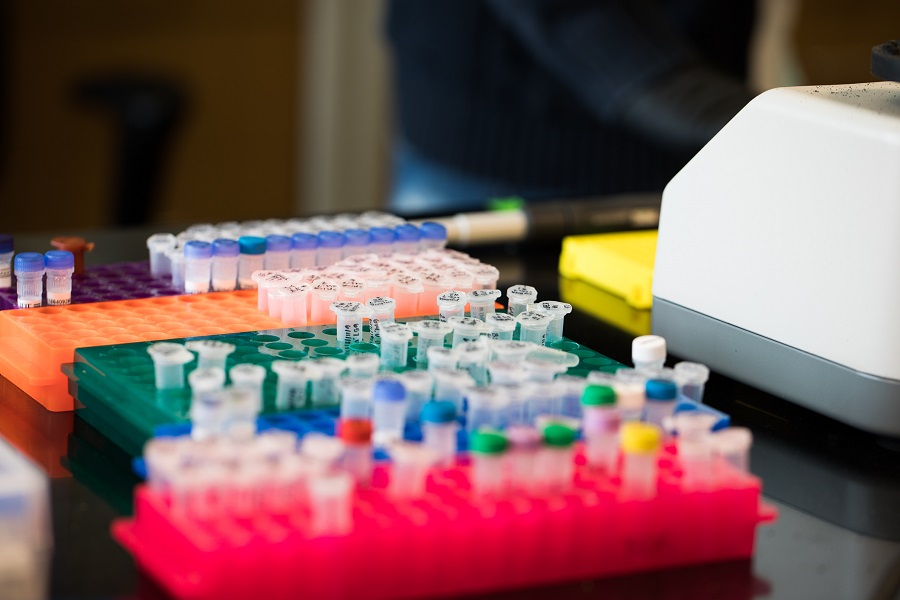Every so often, as Dr. Cara Rabik is in her lab studying better treatments for acute myeloid leukemia (AML), she thinks of a patient she had when she was a resident years ago – the person who is the reason she’s studying this disease today.
This patient was fighting AML, a type of leukemia that is less common in children than other types of leukemia, but far more difficult to treat. He wasn’t able to leave the hospital more than a handful of times during the four months of his treatment. He never went into remission and he had numerous complications from his treatment. He passed away just four months after his diagnosis date – and his spirit inspired Rabik to carry on the fight.
“He’s the reason I became interested in AML,” Rabik said. “Watching his struggle really made a lasting impact on me. I’m still in touch with his family, and they’ve donated to my lab – it’s really because of him that I’m so driven to find better treatments for this disease.”
Cancer research has helped increase survival rates up to 90 percent for certain types of leukemia. However, AML, which is a more genetically diverse disease, hasn’t been studied as much and has survival rates of less than 50 percent.
In about 10 percent of AML patients, researchers have found a genetic mutation called Wilms Tumor 1 (WT1). When WT1 is mutated, it can’t do its job correctly and certain necessary genes go unexpressed. Rabik’s goal is to learn more about this gene and what problems its mutations cause, then identify current drugs that can specifically target the cancer.
Rabik says she’s particularly motivated when she sees the side effects of cancer treatments today, some of which are so aggressive that they impact patients for the rest of their lives.
“Even when our patients survive, greater than 75 percent have long-term side effects,” Rabik said. “Their bodies can handle the treatments when they are kids, but they have to grow up. Survivors who are in their teenage years or early 20s need joint replacements already – that’s not something young people should have to deal with.”
Currently, the only way to treat AML is with high-intensity chemotherapy, which deteriorates a child’s immune system to the point where it can be unsafe for them to leave the hospital. Rabik hopes her research will eventually yield a treatment that is less toxic, doesn’t put patients at high risk of infection and allows them to receive therapy on an outpatient basis.
Rabik’s experience as a resident keeps her motivated in her research, but she says she couldn’t do it without funding like the Emerging Scientist Award from Children’s Cancer Research Fund. The average age of National Institute of Health grant recipients has risen significantly in recent years – many researchers don’t receive grants until their late 40s. Young researchers, who may not have as much of their own published research to make them stand out, rarely receive funding early in their careers. This means great ideas can go unexplored for years until the researcher has published enough of their own work to receive government grants. Rabik believes emerging scientists have something different to offer, and that funding them early makes way for breakthrough discoveries in the future.
“Younger scientists are coming of age at a really exciting time,” Rabik said. “We’re starting to use new technology and explore next-generation DNA sequencing, all things that are the future of cancer research. These amazing kids and teenagers go through the worst things they can go through with so much strength and poise – I’m thankful to CCRF for giving me the opportunity to work towards advancements for them.”
The Emerging Scientist Award from Children’s Cancer Research Fund is a $100,000 grant designed to develop the independent research of highly qualified individuals still early in their careers. Learn more about how your support advances new research and leads to better treatments for kids battling cancer.
Support Emerging Scientists
By donating to Children’s Cancer Research Fund, you’re giving emerging scientists the support they need to put their great ideas into practice.




